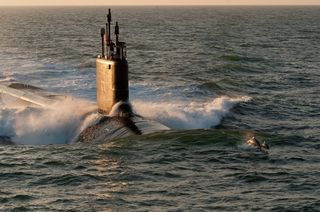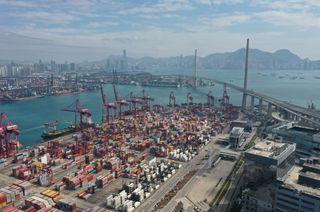The New York Times
By Carol Giacomo
Raise the subject of President Obama’s Asia policy here and an American can expect to be bombarded with questions.With the slowdown in Pentagon spending, and dysfunction in Congress, will the United States really put 60 percent of its defense assets in the Asia-Pacific region by 2020, as promised? Can Mr. Obama afford to invest more time in Asia when he is bogged down with crises in Ukraine and Syria? Can the United States be counted on to defend its allies if China becomes a real threat? What does Mr. Obama’s idea to “rebalance” America’s Asia policy, announced in 2011, really mean?
It’s important that Mr. Obama’s trip to Japan, South Korea, the Philippines and Malaysia this week clarify his plans for greater engagement with Asia. The policy was initially oversold by the White House and, as a result, is often misunderstood in the region as a zero-sum shift rather than a more nuanced calibration. The United States, a longstanding power in the Asia-Pacific region, cannot plausibly abandon its interests in the Middle East, even after withdrawing troops from Iraq and Afghanistan. And America could never disengage from Europe even if Mr. Obama is sometimes accused of being neglectful of allies there.
Still, focusing more attention on Asia has long made sense, given the region’s growing economic importance and the rise of a more assertive China, which has propelled many Asian nations to seek closer cooperation with America.
Mr. Obama’s approach has been criticized by many experts, in Asia and at home, who see the rebalance as over-militarized. Examples include the promised shift of more American defense assets to the region; a new base-sharing agreement with the Philippines; rotating deployments of United States marines in Darwin, Australia; a reassertion of America’s alliance with Japan in the context of Japan’s maritime dispute with China; and expanding arms purchases by the United States’ regional allies and partners.
Security among Asian nations is a top concern. The Ukraine crisis — and Mr. Obama’s response to it — is being watched closely in Asia. The Japanese, particularly, are nervous that the United States is under congressional pressure to slow military spending, and have questioned whether America will deploy its forces should there be conflict with China.
A challenge for Mr. Obama is managing the deepening relationships with Asian allies to enhance stability and freedom of the seas in their region without exacerbating tensions with China. For example, China’s defense minister asserted “indisputable sovereignty” over disputed islands in the East China Sea, in an exchange with Defense Secretary Chuck Hagel, who was in China earlier this month. Yet there were also signs of cooperation when Mr. Hagel was invited to tour the country’s lone aircraft carrier and the two sides agreed to hold regular high-level talks on regional security and their armies.
But the rebalance has to be broader than defense, starting with a robust economic component. The one recurring theme was the importance of achieving the Trans-Pacific Partnership trade pact being negotiated among the United States, Japan and 10 other nations. The Japanese and Americans have been working to resolve differences on agricultural issues so a breakthrough could be announced when Mr. Obama is in Tokyo. Gaps are said to be narrowing, but the outcome is in doubt.
Beyond that are other steps that the administration is pursuing to bind countries in ways that are intended to make conflict less likely and improve economic growth. These include strengthening regional institutions like the Association of Southeast Asian Nations (Asean) and the East Asian Summit meeting, which Mr. Obama will attend later this year; developing partnerships on energy, oceans and climate change with nations like India and Vietnam; and being the host of the first ever meeting of Asean defense ministers earlier this month in Hawaii to discuss humanitarian assistance and disaster relief procedures.
The administration has also been more active in nudging Japan and South Korea, the two nations that are integral to Mr. Obama’s Asia policy, to ease their corrosive animosity, including over Japan’s use of South Korean women as sex slaves for the Japanese Army during World War II.
Asia is a major engine of world economic growth, and rising tensions — between Japan and China, Japan and South Korea, China and some of the smaller maritime countries — could put that at risk. A volatile and chaotic world will continue to demand America’s attention, but Asia is the future and warrants being a top priority.
This article originally appeared in The New York Times.



